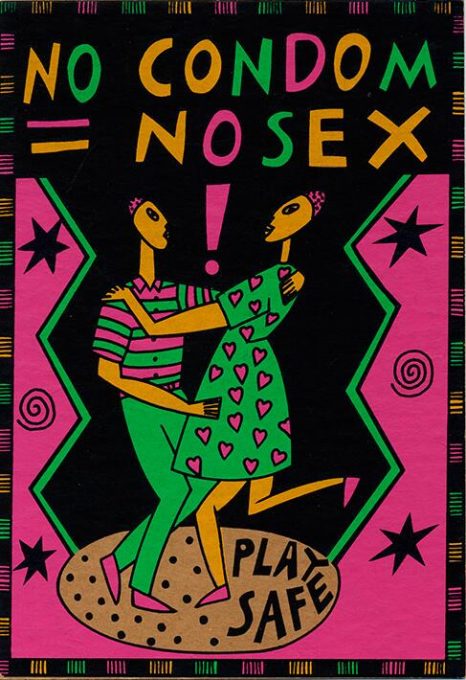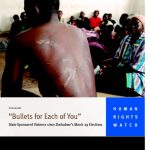Zimbabwe HIV / AIDS
Health and HIV / AIDS
In Zimbabwe, HIV and AIDS are structural problems. In 2019, the official HIV rate among 15 to 49 year olds was 12.8 percent; UNAIDS estimated 1.4 million HIV-infected people and 20,000 AIDS deaths in the same year. In 2016, 30,000 people died of AIDS. According to UNAIDS, there were 22,000 in 2018. In 2019, access-related use of anti-retroviral drugs was 86 percent in adults and 71 percent in children.
Knowledge of their own status and infection rates differ between women and men, which is mainly due to the orientation of HIV counseling towards pregnant women and gender hierarchies in sexual relationships.
Children and adolescents are target groups for HIV prevention programs; infected girls are often stigmatized. These problems are in the context of sexual violence and dominance of many men seen in sexual relationships, negative attitudes towards condoms, poverty and malnutrition. Most men’s aversion to condoms results from colonial control over family planning, the breaking of marriages through migrant labor, and post-colonial definitions of virility by many partners. In contrast, the medical supply problems have political reasons. If anti-retroviral drugs are taken regularly, which can reduce mother-to-child transmission of the HI virus, social and cultural aspects are a hindrance, such as the family stigmatization of HIV-positive pregnant women and AIDS taboos. Some projects from development and health organizations take comprehensive approaches that include dialogue between mothers and the involvement of men.
The first AIDS cases were reported to the AIDS Control Program at the Ministry of Health in 1987. From it emerged the National AIDS Coordination Program. His tasks were planning and coordination. In 1995 more than 50 governmental and non-governmental organizations worked mainly in HIV / AIDS education, medication distribution, counseling and care for patients and their relatives. The multisectoral National AIDS Council, founded in 1999, oversaw prevention and counseling programs and drafted the first national HIV / AIDS policy. There is now a national HIV / AIDS strategy plan (ZNASP 3), including the WHO guidelines for HIV prevention and the prevention of mother-child infections have been accepted by the Ministry of Health. However, in some places the necessary medication is lacking and the financing of the therapies is unclear. At the end of July 2019, for example, that was a massive problem affecting 1.3 million HIV-positive and AIDS-infected Zimbabweans. According to physicscat, HIV prevention programs are aimed primarily at young people.
The official figures on falling infection rates between 2002 and 2006 should be seen in the context of national political controversies. They sparked critical international debates about the compilation of statistics, the prevalence of anti-retroviral drugs, the negative effects of economic restructuring programs on the health sector, mass emigration and AIDS death rates.
The care of AIDS orphans has to be taken care of by the elderly – especially women, especially old women in rural areas – many of whom are frail even after decades of hard physical labor. Local care groups (including home based care groups), some of which are associated with church parishes, have only been able to alleviate their problems to a limited extent for years. Discussion groups that offer locally adapted psychological support are also confronted with great stress. In addition, there have been disputes between the Global Fund to fight AIDS, Tuberculosis and Malaria and the in the past National AIDS Council on Embezzlement of Funds. Given this complexity of problems, reproductive rights are not realized, which often leads to HIV infection.
COVID-19
The consequences of the CORONA crisis from March 2020 are all the more problematic. Although the Ministry of Health made statements about equipment for crisis management, doctors warned that hospitals and health workers were not prepared for COVID-19. Doctors demanded protection against infection through protests and legal channels. Reproductive rights of women and girls were increased during the curfew in the corona crisis disregarded in many ways. Parents found themselves compelled to marry their underage daughters to older men for reasons of existence, which exacerbated the complex problems of child marriages for the girls. Gender-based violence increased and not only resulted in health problems. Party-politically motivated corruption occurred in the distribution of aid supplies during the lockdown. According to official figures, on August 5, 2020, the number of deaths was 84 and the number of infected 4339. On September 11, 2020, the official figures were: 7479 infected and 224 dead, on September 28, 20207,816 people were infected with COVID-19 and 228 died from the consequences of the infection. On October 28, 2020, the official death number was 242 and the number of infections 8,349, 653 of which were employees from the health sector. On December 6, 2020, 281 dead and 10,547 infected were assumed. On September 23, 2020 and September 30, 2020, the government announced new regulations in the context of the pandemic.













